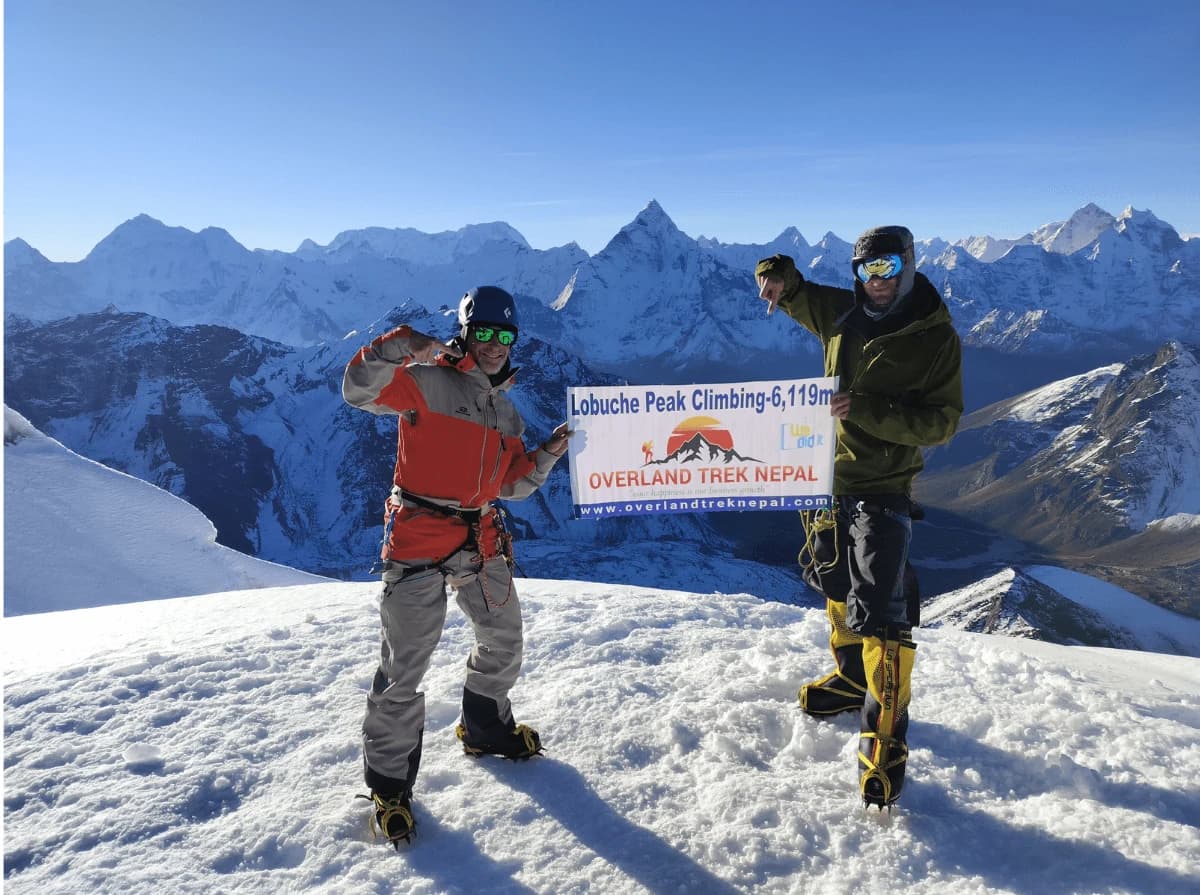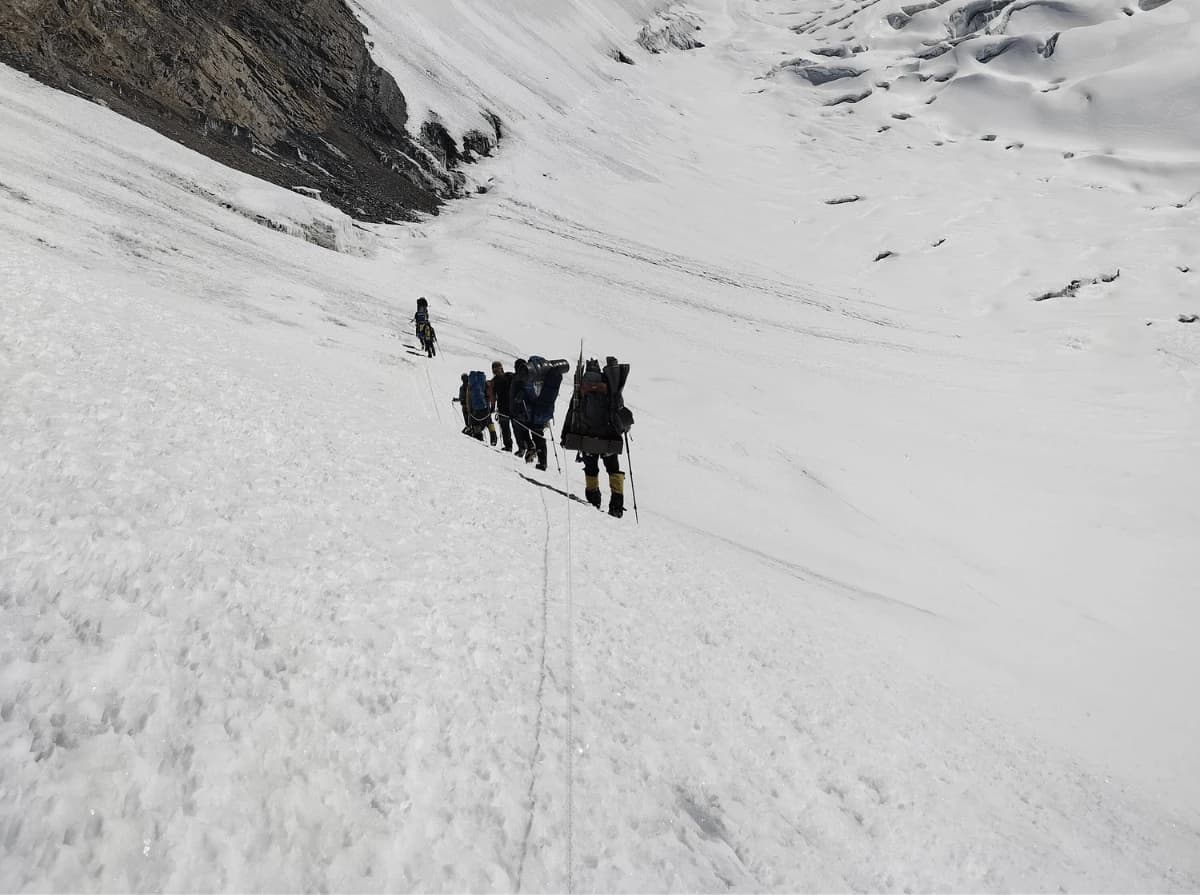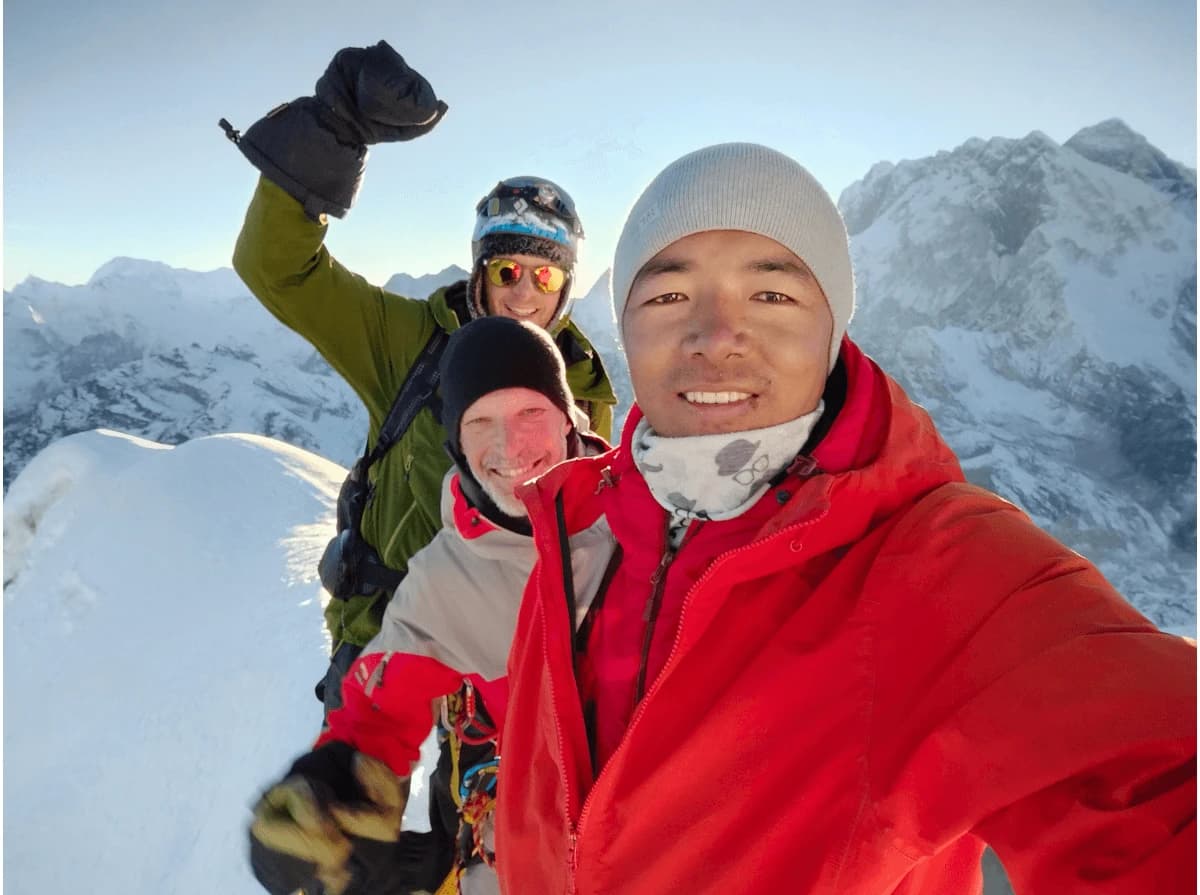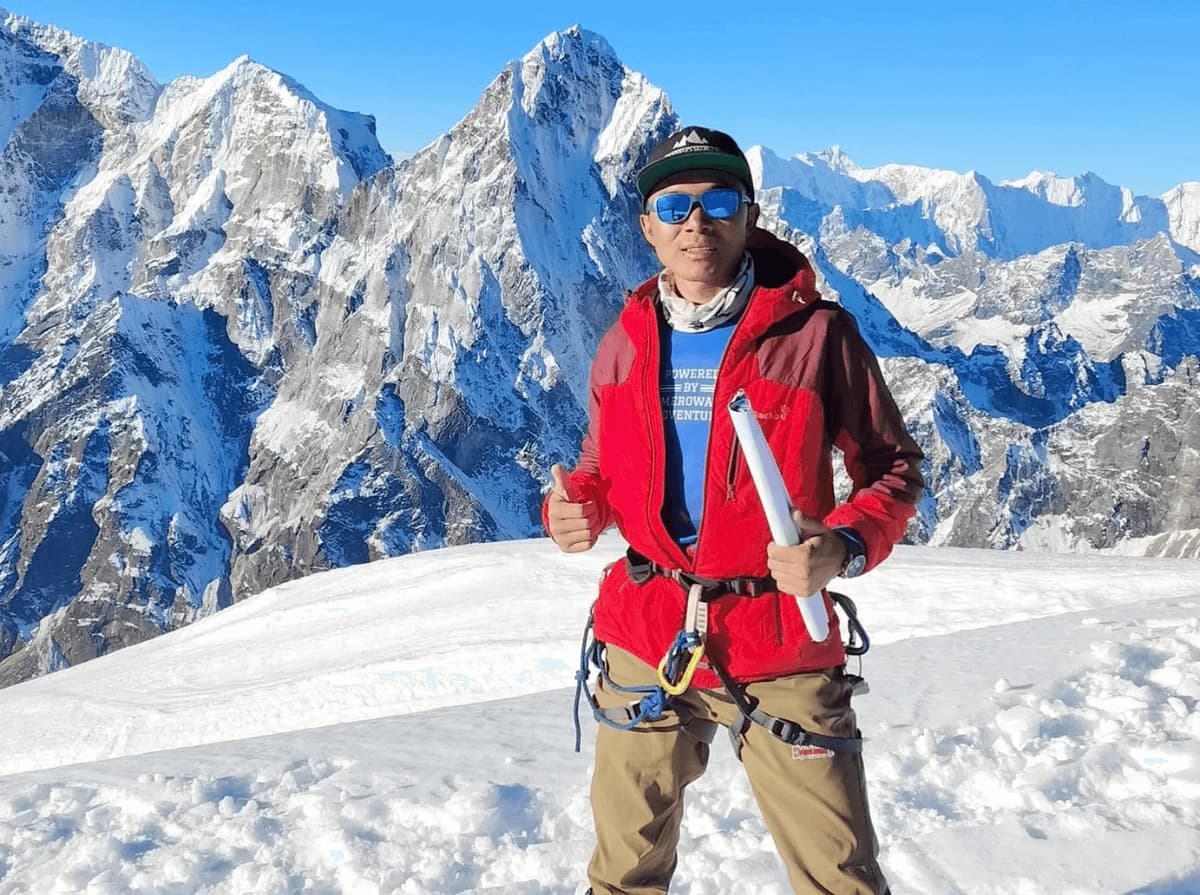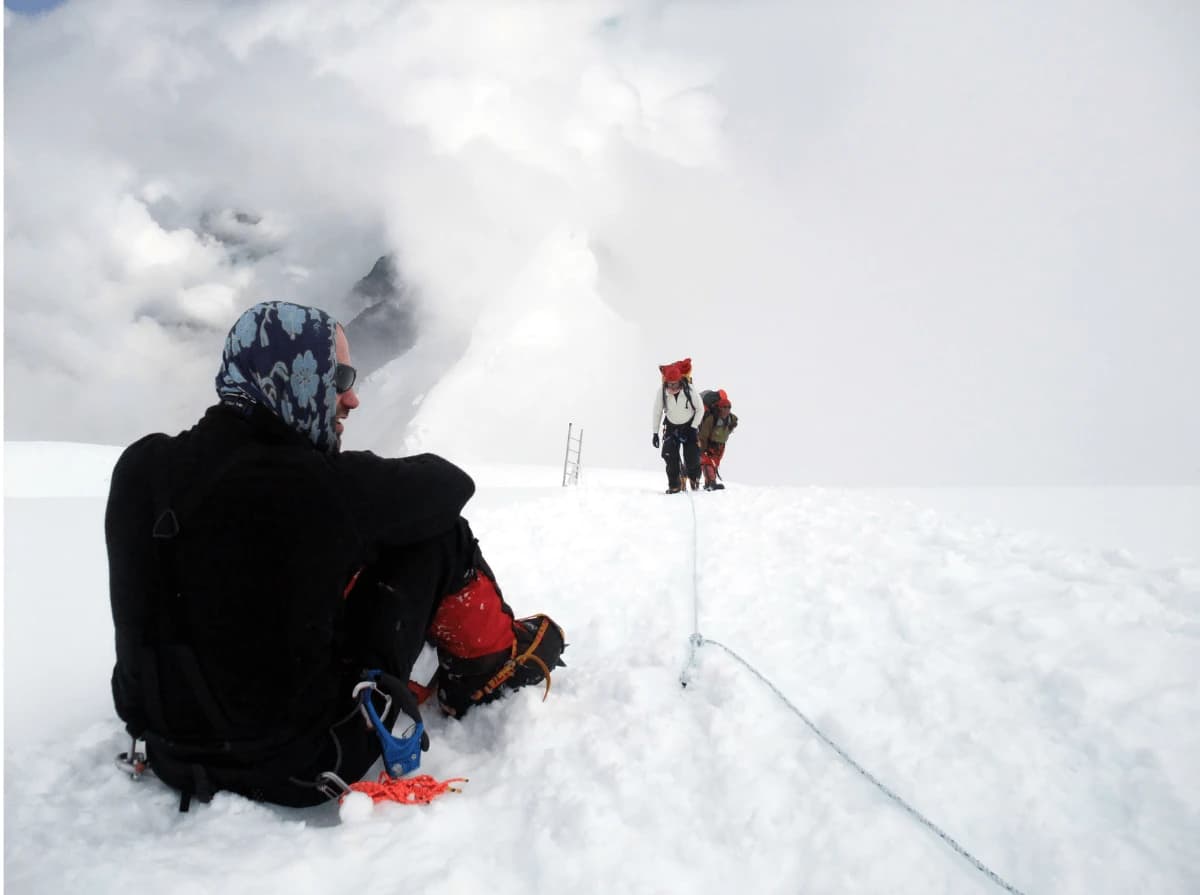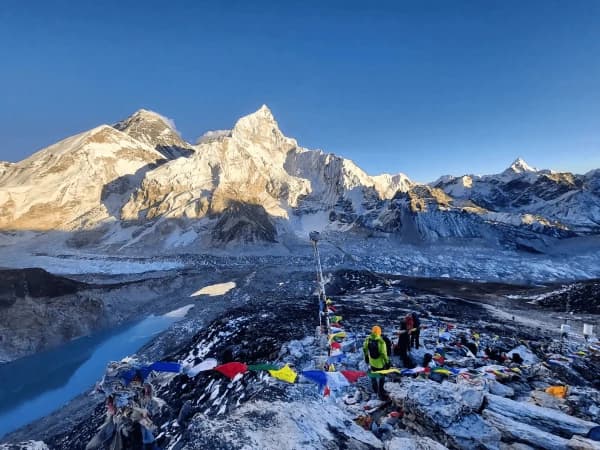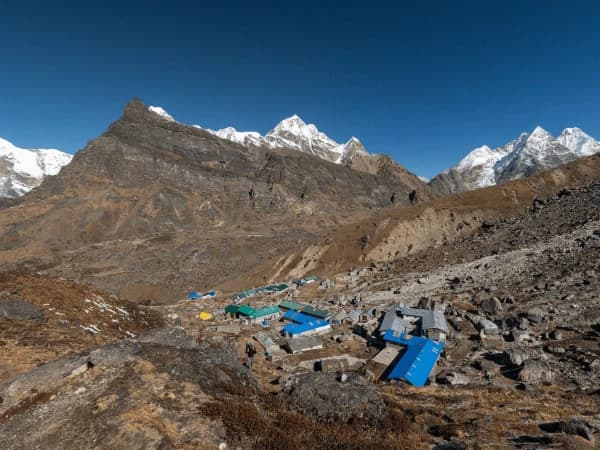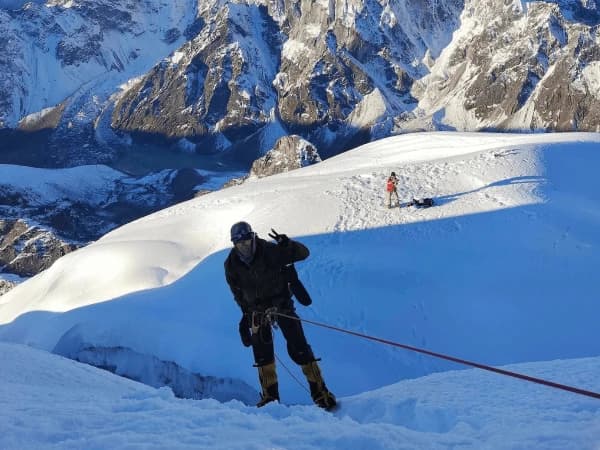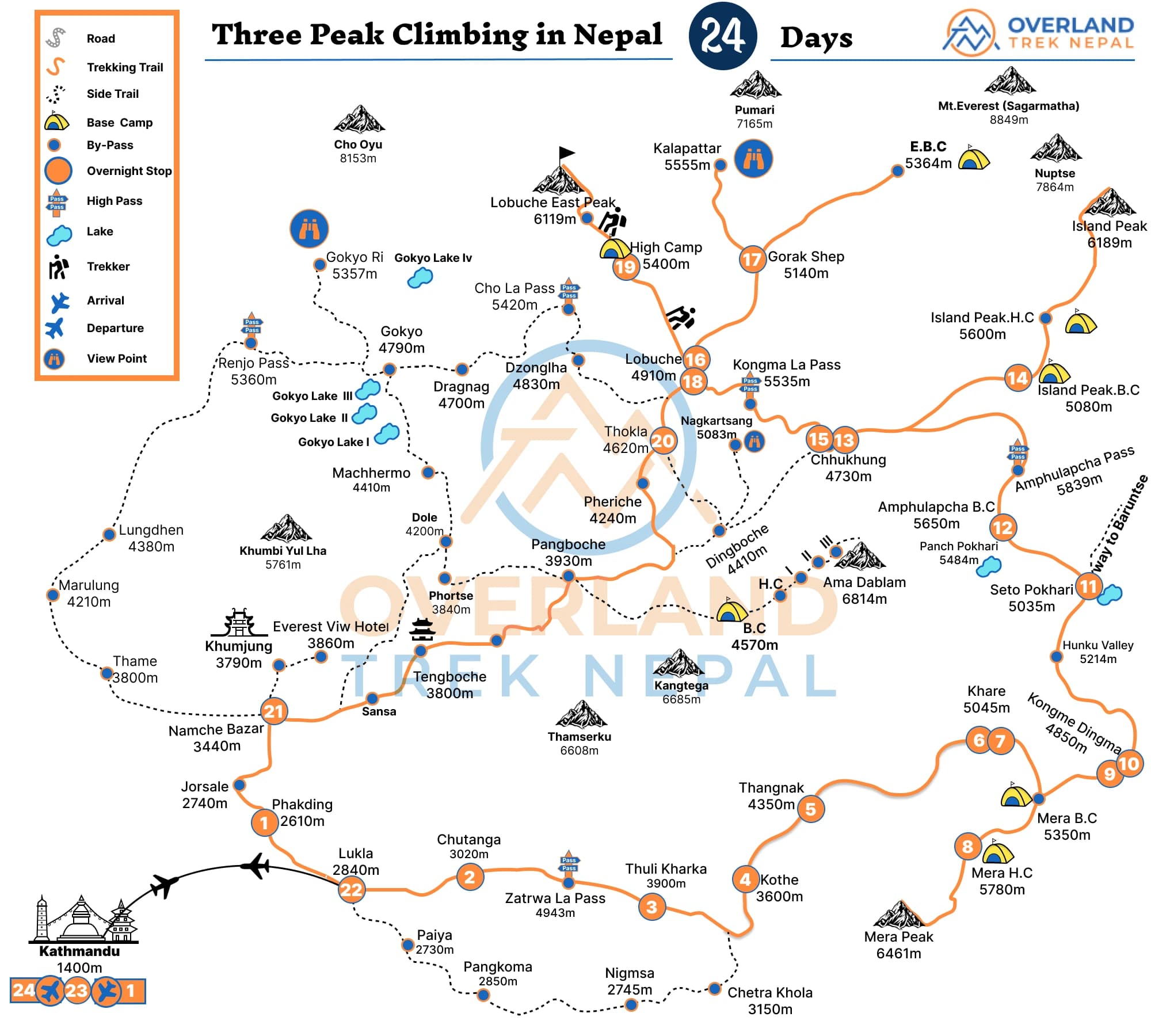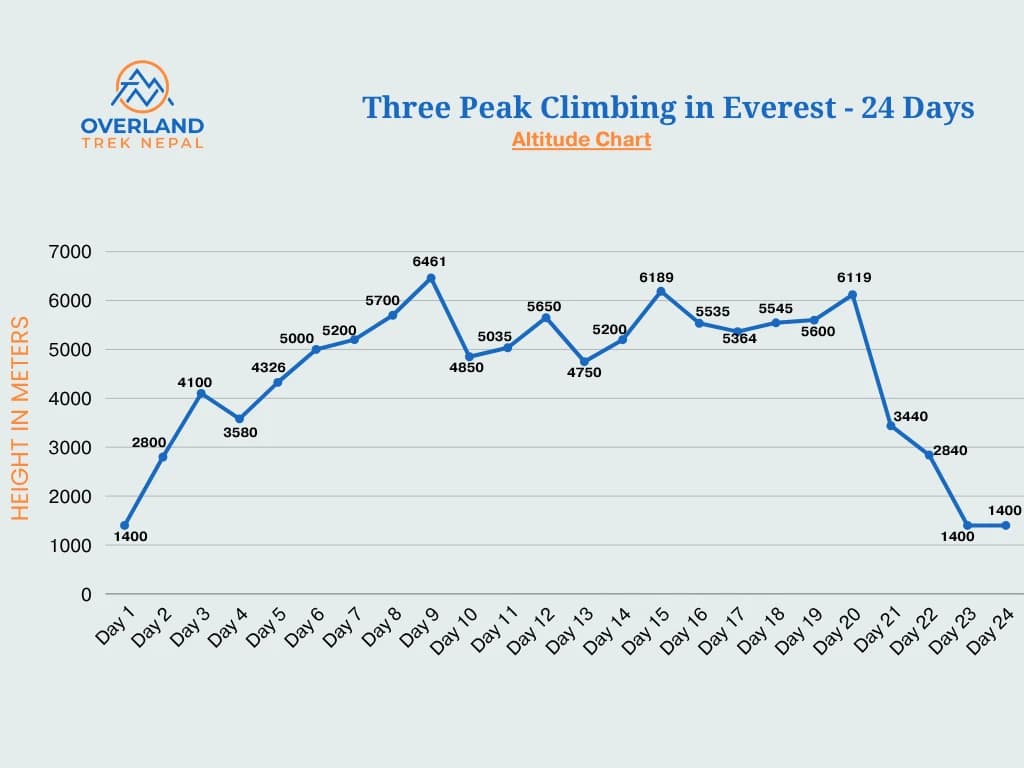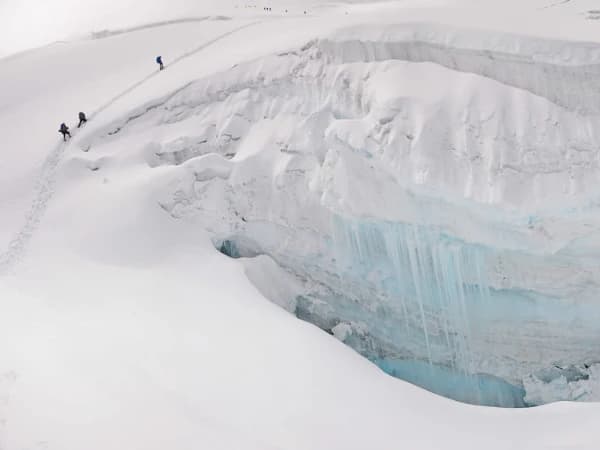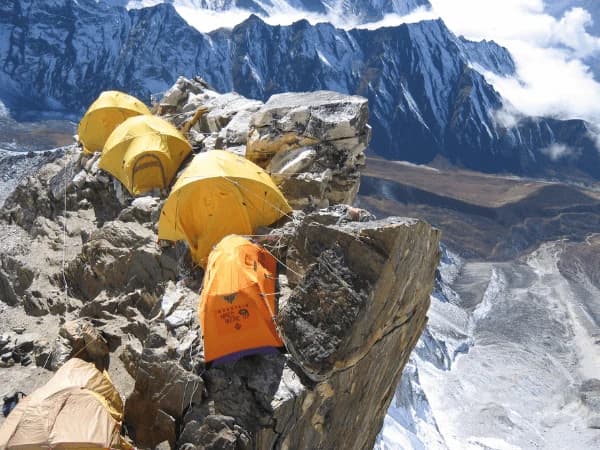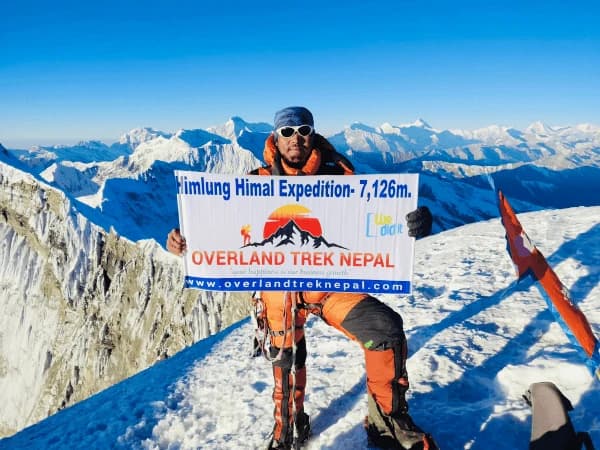Highlights:
- Camping and Teahouse Experience during the entire climbing period.
- Experience the Sherpa Community and their lifestyle during the journey.
- Challenging High-altitude adventure through the heart of the Khumbu Region.
- Climb the most popular trekking peaks of Nepal, Mera, Lobuche, and Island Peak above 6000 meters.
- Unmatched Himalayan views including Mount Everest, Lhotse, Nuptse, Ama Dablam, and other 8000-meter peaks.
Climb the Three Peaks in the Everest
Three Peak Climbing in Nepal takes you to the summit of the highest trekking peaks in Nepal, such as Mera Peak, Island Peak, and Lobuche Peakin the Everest Region. This thrilling venture is an ultimate combination of technical climbing, trekking, and mountaineering experience of a lifetime.
Climbing Mera Peak,Island Peak, and Lobuche Peak in Nepal offers the ultimate Himalayan adventure for thrill-seekers and aspiring mountaineers. These three iconic “trekking peaks” (all above 6,000 meters) each present a unique challenge and breathtaking rewards.
From standing atop Nepal’s highest trekking peak to scaling a steep ice wall in the Everest region, you’ll experience adrenaline-pumping climbs, panoramic views of the world’s tallest mountains, and the rich culture of the Sherpa heartland. Best of all, you don’t have to be a veteran climber – with the right preparation and expert guidance, Mera, Island, or Lobuche Peak could be your first Himalayan summit.
Mera Peak Climbing
Mera Peak climbing is regarded as the Highest Trekking Peak of Nepal, which takes you to an altitude of 6476 meters without any technical sections. Though this peak is the easiest among the three-peak climbing in Nepal, all you need is an excellent level of fitness and strong determination to summit the peak. The Mera Peak climb delivers stunning views of Makalu, Cho Oyu,Kanchenjunga, and several other neighbouring peaks.
Also,find Mera Peak climbing Difficulty
Island Peak climbing
Climbing Island Peak is perhaps the most technical of the three peak climbs in Nepal. It is also known as Imja Tse, which reaches an altitude of 6189 metres. The Island Peak climb offers both trekking and technical climbing experiences. Moreover, the highlight of this climb is the west face, which rises from the Lhotse Glacier, and the heavily glaciated mountain views from the summit. When climbers choose to undertake this peak, it is often combined with Island Peak Climbing with EBC.
Lobuche Peak Climbing
Another challenging and technical trekking peak in Nepal is Lobuche Peak Climbingat 6119 meters. The Lobuche Peak climb requires advanced climbing techniques to navigate the summit's technical sections. Climbers must know how to use the ice axe, ropes, crampons, etc., to navigate the steep ice walls before reaching the summit of the Lobuche. Though Lobuche Peak is challenging, the views from the top are equally rewarding.
Find out:How to Prepare for Lobuche Peak Climb?
Who can do the Three Peak Climbing in Nepal?
The Three Peak Climbing is an ultimate adventure that involves three 6000-meter peaks, including the challenging Ambhu Labtcha Pass at 5850 meters. So, the question is, who can do the Three Peak Climbing in Nepal?
This adventure is ideal for those who want to test their mountaineering skill from the easiest trekking peak, Mera, to the technical Lobuche Peak climb. Moreover, if you are preparing for the 7000-meter climb like the Himlung Himal Expedition, then doing these three peaks is perfect for the preparation.
Additionally, the Three Peak Expedition in Nepal needs strong commitment and physical effort to complete the 6000-meter peaks within 20-25 Days. Those who have high altitude trekking experience above 5000 meters can complete this trip. Also, basic mountaineering skills are so important for the Island Peak climb and the Lobuche Peak climb. If you have those skills and can adapt to the high-altitude trekking, this trip is best for you.
Mera vs. Island vs. Lobuche – Which Peak Should You Climb First?
With three amazing peaks to choose from, you might be wondering which one is right for you. The answer depends on your goals, experience, and what kind of adventure you seek. Here’s a quick comparison to help you decide (and remember, you can’t go wrong – each of these climbs is incredible in its own way!):
If you’re a novice climber or trekker aiming for your first 6000m summit, start with Mera Peak. It’s the highest of the three, but the least technical. Mera offers a big altitude achievement with lower risk – perfect to test how you handle extreme altitude while building basic climbing skills. The solitude and raw beauty of the Hinku Valley are bonuses for those who love wilderness. Many climbers use Mera as a stepping stone; once you’ve done Mera, you’ll have the confidence to tackle the others.
If you want a classic Everest region experience with a mix of trekking and climbing, choose Island Peak. It combines the famous EBC trek with an exciting climb that has a bit of everything – glacier travel, a big ice headwall, and a sharp ridge. Island Peak is slightly more technical than Mera, but still very much achievable for fit beginners, especially with a good guide. It’s an excellent choice if you want that taste of mountaineering plus the comfort of knowing many have done it before as their first climb.
If you crave a challenge and have either prior experience or a firm determination, go for Lobuche Peak Climbing. As the hardest of the three, Lobuche will push you the most, which also means it’s the most rewarding for many. Ideally, do Lobuche after you’ve done one of the other peaks or at least some winter alpine training. That said, if you’re up for it, Lobuche could be your first climb too (with the understanding you’ll work hard!). You’ll get to stand face-to-face with Everest and truly earn your Himalayan climber badge. Overland Trek Nepal can provide extra practice sessions if Lobuche is your first – we ensure you’re prepared for those fixed ropes and steep ascents.
Three Peak Climbing Cost including Mera, Island, and Lobuche Peak
The Three Peak Climbing costs range between USD 3899 to USD 5599 per person in an inclusive package. Overland Trek Nepal provides several solo and group trips to the Three Peaks of the Everest Region at a competitive and fair price. The cost includes the domestic flight fare, climbing guide, porters, meals, accommodation, camping equipment, necessary climbing permits, and several logistical arrangements. Three Peak climbing cost also depends on the group size and the itinerary. Feel free to contact us via email or WhatsApp us at +9779841920870 to know more details about the cost.
Why choose Overland Trek Nepal for the Three Peak climbing in Nepal?
If the Three Peak Expedition is your next bucket list, then look nowhere and choose Overland Trek Nepal. Embarking on the Mera, Island, and Lobuche Peak with Overland Trek Nepal ensures an unmatched combination of safety, local expertise, and personalised care. As a government-registered adventure operator with decades of experience in high-altitude mountaineering, Overland Trek Nepal specialises in crafting the Peak climbing packages led by certified Climbing Sherpa Guides. Here are the reasons why you should climb with us:
- Skilful and expert Sherpa Guide and other crew members
- Climbing Equipment from Khare, like Ice-Axe, Harness, Crampons, Ascender, Descender Lock, etc.
- Peak Climbing Achievement Certificate
- A climbing guide carries First Aid Kid.
- Free Mera Peak, Island Peak, and Lobuche Peak Route Map
- Flexible Three Peak Expedition Itinerary
- Constant communication with climbers and staff members.
- Free luggage storage at Overland Trek Nepal during the whole journey.
- An Hour Massage after arriving at Kathmandu in a Spa House.
Need further details about the trip? Feel free to email us or WhatsApp us at +9779841920870.
